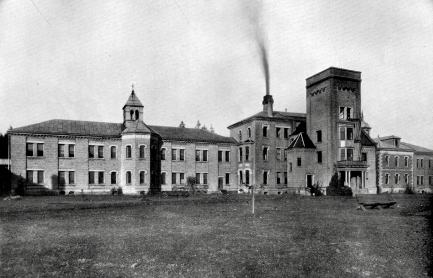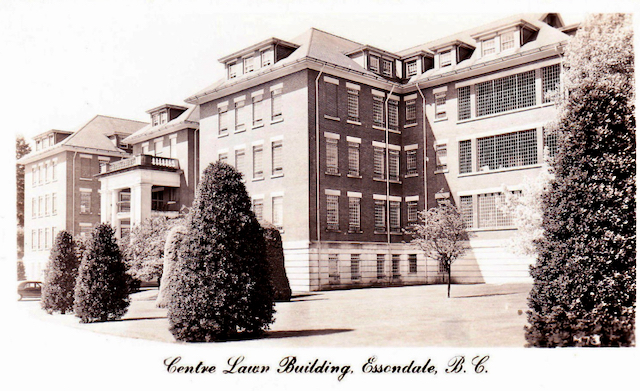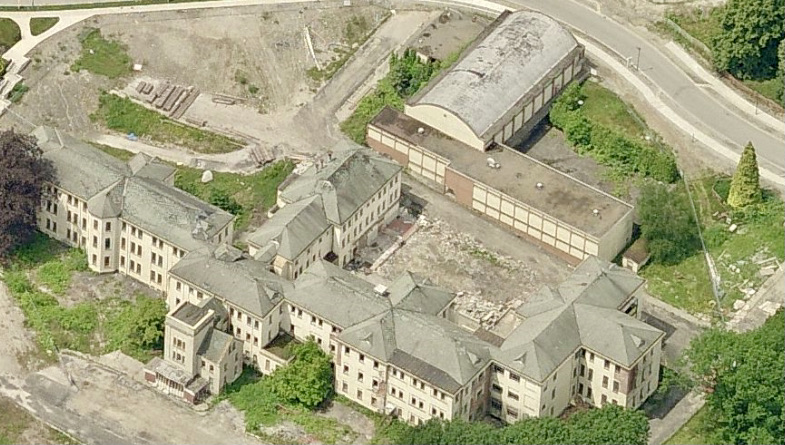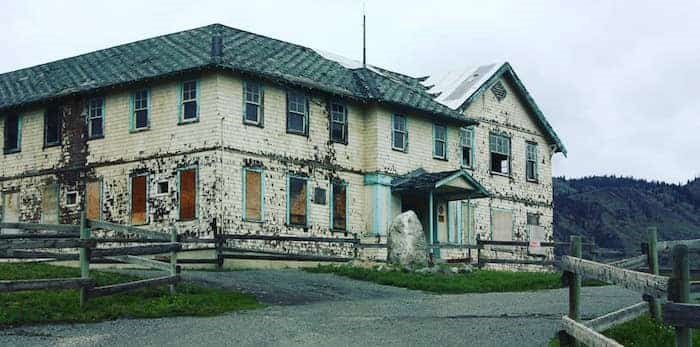Institutions
When provincial governments assumed responsibility for social services under the British North America Act of 1867, large institutions were built to provide residential care for people with intellectual disabilities and mental illness. People who lived in the institutions were hidden from view. It was virtually impossible for families to visit and maintain contact. Institutions were designed to provide care to large numbers of individuals in a cost-effective manner.
Institutions were depersonalizing and provided little more than custodial care. For example, clothing was not specific to a particular person, but brought up from laundry and shared. The growth of institutional care resulted in chronic underfunding and overcrowding. Exposés in the 1960s and 1970s detailed horrific abuses endured by individuals living in institutions and ultimately fueled the deinstitutionalization movement of the 1980s and 1990s.
As you explore the Institutions timeline, reflect/journal on the following:
- Were institutions a good or bad practice?
- Did changing the name from asylum to hospital to school have any impact on the lives of the people who lived there?
- What has the history of institutionalization taught us?
-
19th Century
-
The establishment of Canada as a nation in 1867 resulted in the determination of responsibilities and authorities for both federal and provincial governments. The British North America Act of 1867 established that provincial governments were responsible for health care, education, and social services. As such, ongoing policy issues about the provision of services to people with disabilities are entrenched in the division of powers and responsibility outlined in the Act.

-
Built in New Westminster, the Provincial Lunatic Asylum opened in 1878 to ease the overcrowding issues at the Victoria Lunatic Asylum (open 1872 to 1878). As was general practice at the time, the asylum was located far from any populated areas. The only other building nearby was the B.C. Penitentiary, which also opened in 1878. This practice of separating perceived “undesirables” from the rest of society was strongly supported by the eugenics movement. In 1897, the asylum changed its name to the Provincial Hospital for the Insane. A subsequent name change, to Woodlands School, occurred in 1950.
“Another peculiarity of the wards was “the unusual height of the window sills from the floor, so no one could see out unless he stood on something as high as a table, which was a common way for patients to spend hours. This defect coupled with that of having heavy iron bars for window guards…made the ward[s] very gloomy, and they possessed no decorations, carpets nor curtains…”
T. W. Paterson, British Columbia History Lives Here!

-
20th Century
-
In 1909, construction began on a facility to house 300 people with serious mental illness and reduce overcrowding at the Provincial Hospital for the Insane. The new institution first opened in 1904 using temporary housing until construction was completed in 1913. Three hundred and forty people were transferred from the Provincial Asylum for the Insane to the Hospital for the Mind in Coquitlam, already exceeding the capacity for which it was built. Soon after opening, the facility was renamed Essondale. In 1965, its name was changed again, becoming Riverview Hospital.
Riverview Mental Hospital/Essondale

-
In 1950, the B.C. Provincial Hospital for the Insane was renamed Woodlands School and the emphasis shifted to education. By the late 1950s, there were approximately 1400 people living at Woodlands.

-
At the Association for Retarded Children of B.C.'s 1956 Annual General Meeting, Dr. W.A. Plenderlaith, representing the Department of Education, told delegates: “Government does not wish to go into the field of education for retarded children and believes it is better to leave the matter in the hands of the organizations who are dealing with it.”
-
Tranquille Institution opened in Kamloops in 1959. Originally a tuberculosis sanatorium that closed the previous year, the institution was reopened specifically for people with developmental disabilities.
The deep, dark and mysterious history of Tranquille Sanatorium and psychiatric institution

-
In 1973, at a time when advocacy groups and movements were promoting inclusive efforts in education and community living, Glendale Lodge opened in Victoria, B.C., as an institution for people with severe disabilities.